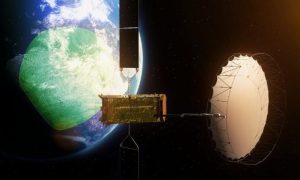How Do 5G FR1 and FR2 Bands Differ?
In the evolving landscape of 5G technology, understanding the distinctions between Frequency Range 1 (FR1) and Frequency Range 2 (FR2) is crucial for appreciating how these technologies are shaping our wireless communication systems. These two frequency ranges, designated by the 3GPP, serve different purposes and present unique characteristics beneficial for specific use cases in 5G networks.

Frequency Spectrum and Propagation
FR1, covering frequencies from 450 MHz to 6 GHz, taps into the lower frequency bands. These frequencies are known for their long-range capabilities and their ability to penetrate solid structures like buildings and trees. This makes FR1 ideal for providing broad coverage and ensuring that cellular service reaches wider geographic areas and indoor environments.
Conversely, FR2 operates within the 24.25 GHz to 52.6 GHz range, entering the millimeter wave (mmWave) spectrum. These higher frequencies are characterized by shorter wavelengths, which naturally allow for faster data transmission but at the cost of reduced range and poor obstacle penetration. FR2's capabilities are best utilized in densely populated urban areas where high data throughput is necessary, albeit over shorter distances.
Data Throughput and Capacity
The higher the frequency, the greater the capacity for data transmission. FR2's use of mmWave technology allows it to achieve significantly higher data rates, reaching up to several gigabits per second (Gbps). This is crucial for applications requiring immense bandwidth, such as high-definition video streaming, augmented reality, and other data-intensive services.
On the other hand, FR1 generally offers more moderate speeds, sufficient for everyday mobile internet use, ranging from around 100 Mbps to 1 Gbps. While not as fast as FR2, the speed and reliability of FR1 are adequate for the majority of mobile services and ensure a more consistent quality of service over larger areas.
Infrastructure and Deployment
Deploying FR2 networks involves denser infrastructure due to its limited range and penetration capabilities. This requires a significant number of small cells—small, discrete cellular nodes often placed in urban settings to boost signal coverage and capacity.
FR1, however, can leverage existing cellular infrastructure due to its compatibility with previous generation networks, like 4G LTE. This not only helps in reducing the overall cost of network upgrades but also speeds up the deployment process across extensive areas.
Application Suitability
The choice between FR1 and FR2 typically boils down to the specific application and environment. FR1 is suited for general-purpose use across wide areas, making it the backbone of nationwide 5G deployment. It supports everything from mobile voice and data services to broad IoT connectivity, essential for smart city applications and rural internet coverage.
In contrast, FR2 excels in high-bandwidth, low-latency applications found in urban centers and industrial environments. It supports ultra-reliable low-latency communications (URLLC) and massive machine-type communications (mMTC), both of which are critical for the future of smart industries and urban infrastructure.
Understanding the key differences between 5G FR1 vs FR2 helps stakeholders make informed decisions about network design, device manufacturing, and service implementation, ensuring that the capabilities of both frequency ranges are optimized to meet the diverse needs of users and industries worldwide. As 5G technology progresses, the strategic deployment of both FR1 and FR2 will be instrumental in realizing the full potential of next-generation wireless communication.
